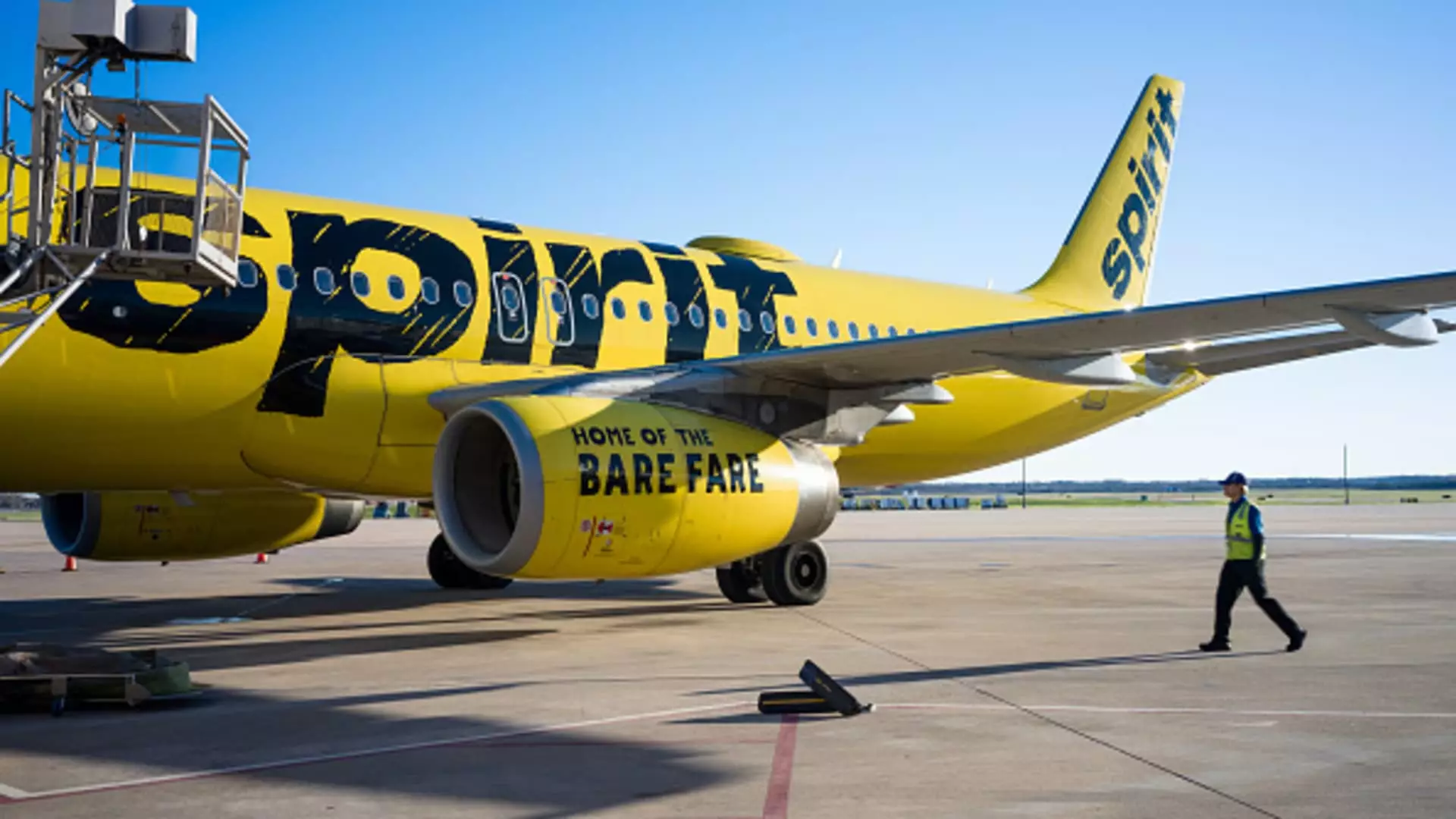On a crucial Friday, Spirit Airlines disclosed that it had struck a deal with its credit card processor to extend its debt refinancing timeline to December, narrowly avoiding a looming deadline. This development arrives after the airline had already utilized its entire $300 million revolving credit facility earlier in the week, bringing attention to its current liquidity situation. According to their recent filing, Spirit anticipates finishing the year with a liquidity cushion of just over $1 billion. While this extension may seem like a lifeline, it also highlights an underlying vulnerability, raising questions about the sustainability of such financial maneuvers in the long run.
The turbulence for Spirit Airlines does not stop at refinancing. The airline has been embroiled in ongoing dialogues regarding its financial obligations, specifically concerning its senior secured notes maturing in 2025 and convertible senior notes due in 2026. The company’s proactive engagement indicates an awareness of the challenges ahead, yet the overarching narrative is one of uncertainty and strain. With deadlines being pushed back multiple times, one can’t help but wonder whether these short-term solutions will lead to long-term stability.
Market reactions to Spirit Airlines’ difficulties are becoming increasingly evident. The company’s stock recently settled at a record low, experiencing a downturn of approximately 3%, falling below the $1.50 per share mark. Such a decline marks a striking contrast to its earlier performance, epitomizing the lack of investor confidence. Spirit’s shares have plummeted by over 90% throughout the year, with a staggering 40% drop just in October alone. The current stock price reflects not only the airline’s precarious financial situation but also apprehensions regarding its operational viability.
Operational Challenges and Future Prospects
To conserve cash, Spirit Airlines has resorted to furloughing employees, significantly reducing its flight schedule, and delaying new aircraft deliveries. This has resulted in numerous aircraft being grounded, a scenario exacerbated by an ongoing engine recall from Pratt & Whitney. Further compounding its difficulties are disappointing booking numbers, which have not met expectations, revealing a significant gap between the airline’s operational aspirations and actual performance.
A recent legal ruling has denounced the proposed acquisition by JetBlue Airways on antitrust grounds, which not only disrupted Spirit’s strategic plans but also fueled speculation about the company’s capacity to pull through these turbulent times. The looming possibility of a bankruptcy filing, as reported by The Wall Street Journal, adds another layer of urgency to the situation, leaving stakeholders anxiously awaiting clarity on the airline’s future trajectory.
In essence, Spirit Airlines finds itself navigating through murky waters fraught with financial and operational challenges. While recent refinancing agreements may offer temporary reprieve, the airline’s outlook remains fraught with uncertainty. As it grapples with significant debt, dwindling investor confidence, and operational setbacks, the question becomes not if Spirit will recover but how it will strategically maneuver through these turbulent skies to ensure its survival in an increasingly competitive aviation landscape.


Napsat komentář